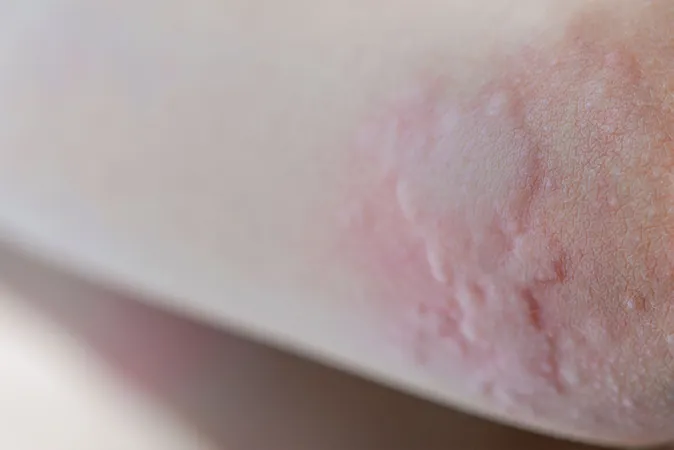
Uncovering the Hidden Impact of Urticaria: Insights from Dr. Jason Hawkes
2024-09-17
Author: Sarah
A Silent Epidemic: The Real-Life Impact of Urticaria
Hawkes emphasized the social isolation and psychological ramifications that come with urticaria, stating, “This disease is so visible that patients often withdraw socially. We see correlations with substance abuse and a decline in quality of life comparable to those suffering from severe coronary artery disease.” He expressed that patients urgently require rapid diagnosis and effective treatments, shedding light on the profound impact this condition has on their daily lives.
Understanding Urticaria: Types and Epidemiology
Dr. Hawkes, who has personal experience with urticaria, discussed the various forms of this skin condition and its prevalence in the population. He led an interactive session where attendees were encouraged to diagnose and propose treatment for different case studies, illustrating the practical challenges in managing urticaria effectively.
Navigating Medication Warnings: An Insight on Omalizumab
One area of concern addressed by Hawkes was the black box warning associated with omalizumab, a medication commonly used to treat urticaria. The fear of anaphylaxis—a severe allergic reaction—lingers among patients. However, Dr. Hawkes reassured that while anaphylaxis has been reported in asthma trials, it is extremely rare in urticaria treatments, occurring in only 0.1% of cases compared to a baseline rate of 2% without treatment. He noted, “While my patients have used an EpiPen, they typically use it for peanut allergies or bee stings, not urticaria issues.”
Exciting New Developments in Urticaria Therapy
In concluding his session, Dr. Hawkes discussed innovative therapies on the horizon for urticaria management. He noted that while traditional therapies like omalizumab have not been widely adopted by dermatologists, new options are emerging, including dupilumab. “Recent phase 3 studies show about one-third of patients achieve total clearance of their urticaria—a promising shift in treatment dynamics,” he stated during an interview with Dermatology Times.
Particularly noteworthy is the investigation into Bruton's tyrosine kinase (BTK) inhibitor remibrutinib. “This new mechanism targets mast cells directly, offering advantages beyond just blocking IgE,” Hawkes explained. “Its potential to address various mast cell disorders makes it particularly groundbreaking.” Dr. Hawkes highlighted that the upcoming years will bring a surge of research and development in this field, brimming with possibilities.
Conclusion: A Call for Awareness and Action
Dr. Jason Hawkes’ thorough examination of urticaria not only enlightens healthcare professionals about the severity of this condition but also calls for increased awareness and proactive treatment options. With significant advancements on the horizon, there is hope for patients who feel the weight of this burden—urging us to never underestimate the impact of urticaria on lives.
Stay tuned for further updates as the landscape of urticaria treatments continues to evolve!

 Brasil (PT)
Brasil (PT)
 Canada (EN)
Canada (EN)
 Chile (ES)
Chile (ES)
 España (ES)
España (ES)
 France (FR)
France (FR)
 Hong Kong (EN)
Hong Kong (EN)
 Italia (IT)
Italia (IT)
 日本 (JA)
日本 (JA)
 Magyarország (HU)
Magyarország (HU)
 Norge (NO)
Norge (NO)
 Polska (PL)
Polska (PL)
 Schweiz (DE)
Schweiz (DE)
 Singapore (EN)
Singapore (EN)
 Sverige (SV)
Sverige (SV)
 Suomi (FI)
Suomi (FI)
 Türkiye (TR)
Türkiye (TR)